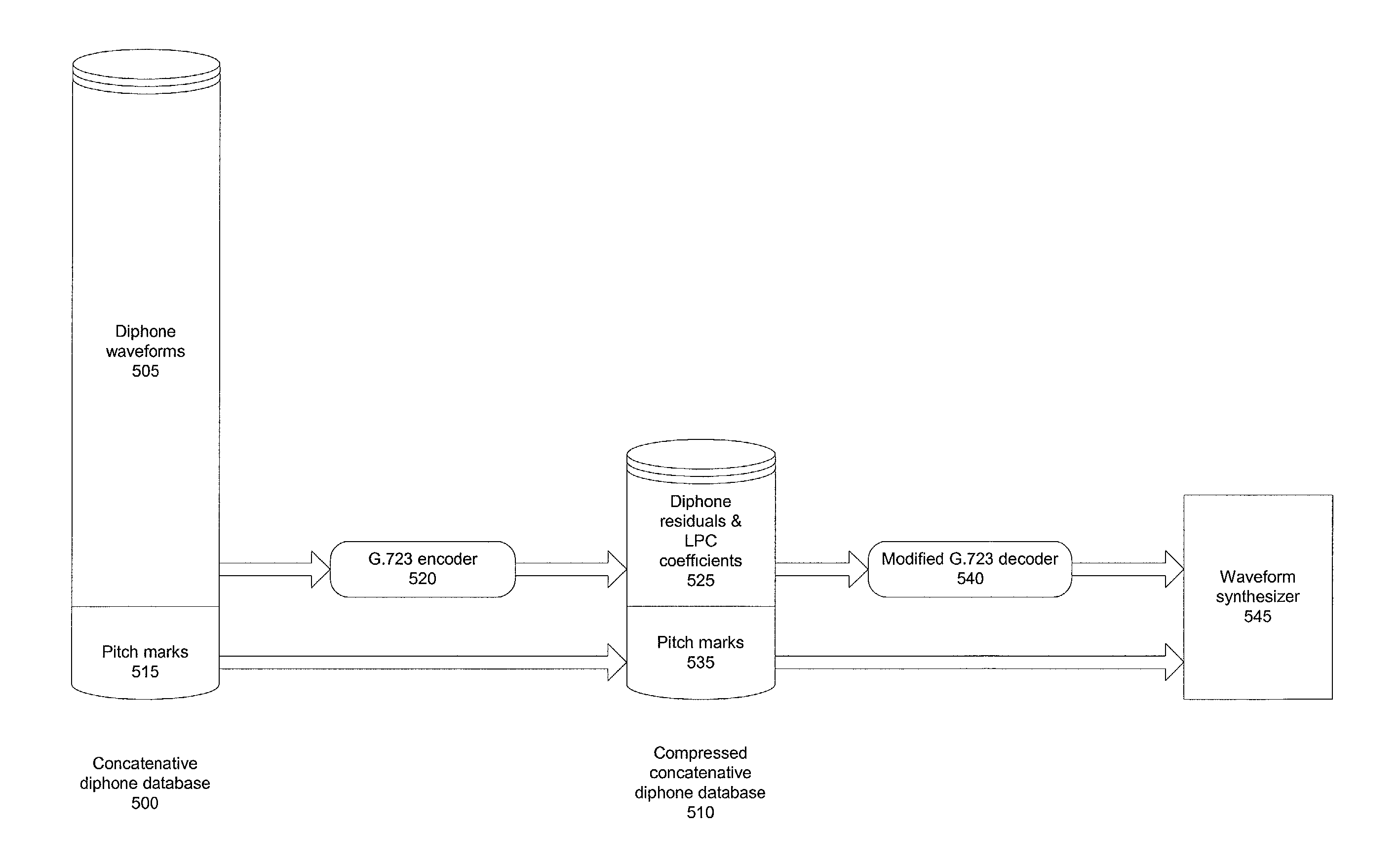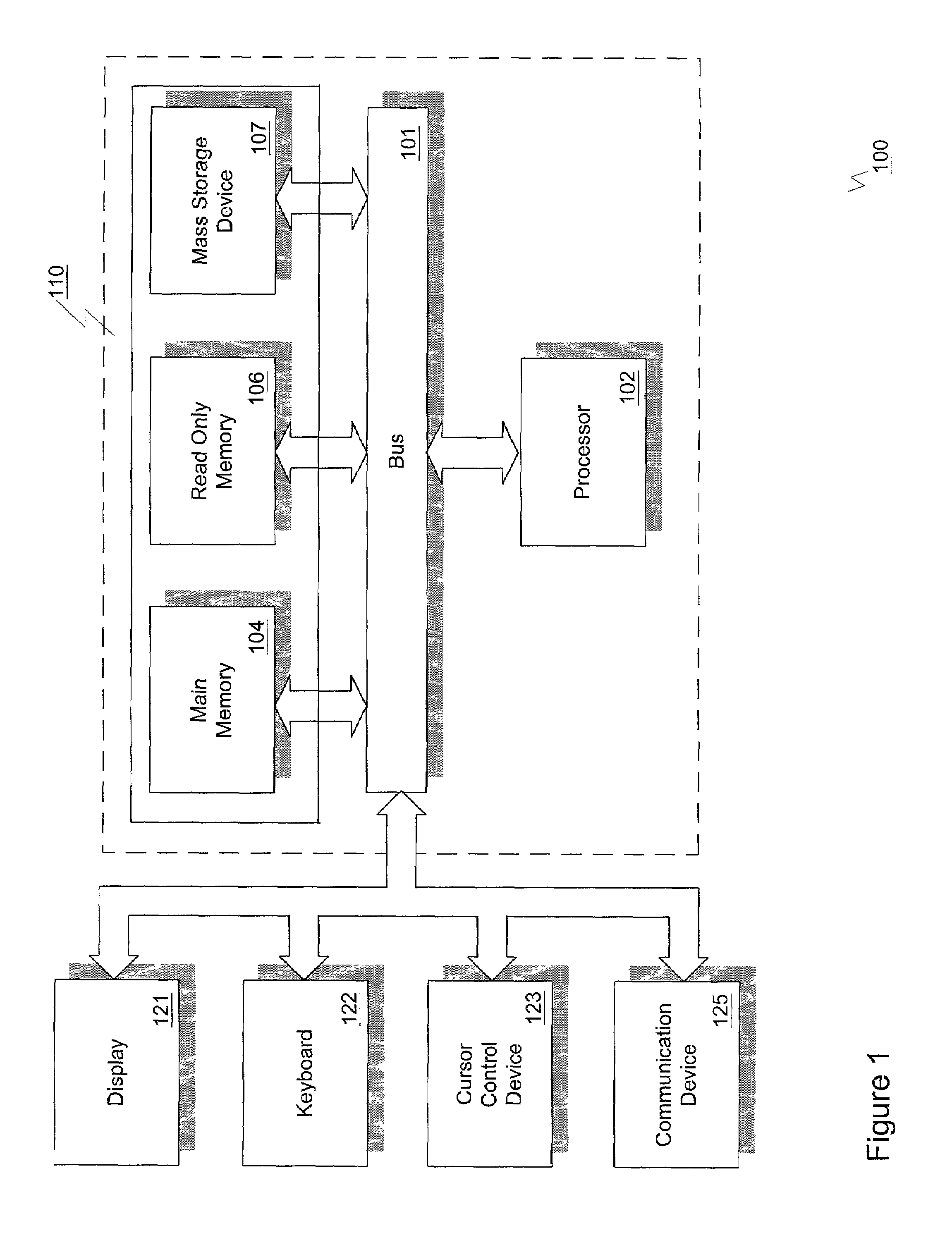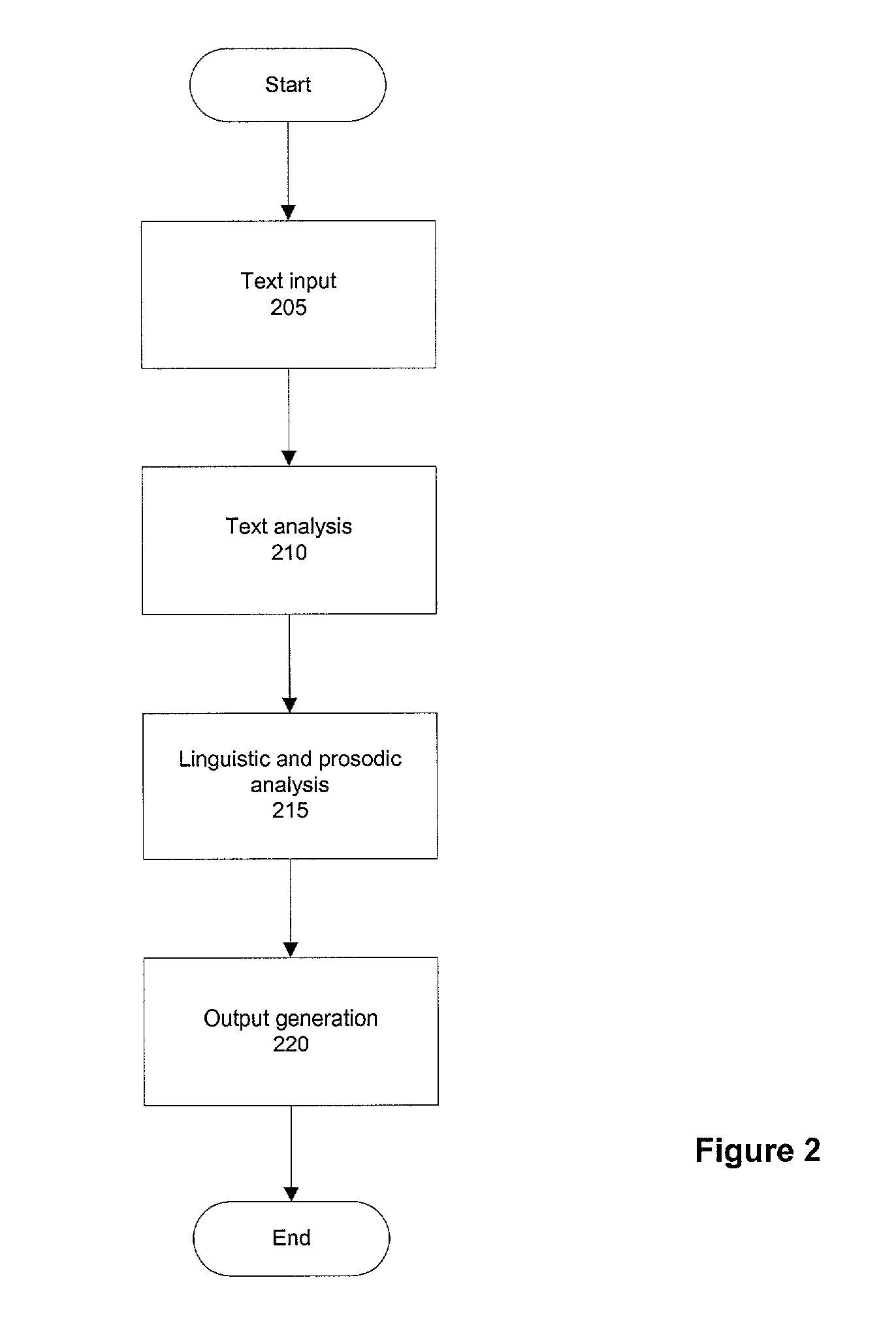Compressing and using a concatenative speech database in text-to-speech systems
a text-to-speech and database technology, applied in the field of speech synthesis and speech input/output (i/o) applications, can solve the problems of rule-based synthesizers producing errors, conventional tts systems based on formant synthesis and articulatory synthesis are not mature enough to produce the same quality of synthetic speech, and the use of speech synthesis techniques is nothing new
- Summary
- Abstract
- Description
- Claims
- Application Information
AI Technical Summary
Problems solved by technology
Method used
Image
Examples
Embodiment Construction
[0014]A method and apparatus are described for compressing a concatenative speech database in a TTS system. Broadly stated, embodiments of the present invention allow the size of a concatenative diphone database to be reduced with minimal difference in quality of resulting synthesized speech compared to that produced from an uncompressed database.
[0015]According to one embodiment, the effective compression ratio achieved is approximately 20:1 for the diphone waveform portion of the database. Advantageously, due to the small memory footprint of the compressed concatenative diphone database, TTS systems may be deployed in handheld devices or other environments with limited memory and low MIPS. Further, it facilitates easy download of customizable speech database (character voices) to be used with the waveform synthesizer along with any desired audio effects. The quality of synthesized speech in web-enabled handheld devices will also be much better, as synthesis is performed on client-...
PUM
 Login to View More
Login to View More Abstract
Description
Claims
Application Information
 Login to View More
Login to View More - R&D
- Intellectual Property
- Life Sciences
- Materials
- Tech Scout
- Unparalleled Data Quality
- Higher Quality Content
- 60% Fewer Hallucinations
Browse by: Latest US Patents, China's latest patents, Technical Efficacy Thesaurus, Application Domain, Technology Topic, Popular Technical Reports.
© 2025 PatSnap. All rights reserved.Legal|Privacy policy|Modern Slavery Act Transparency Statement|Sitemap|About US| Contact US: help@patsnap.com



